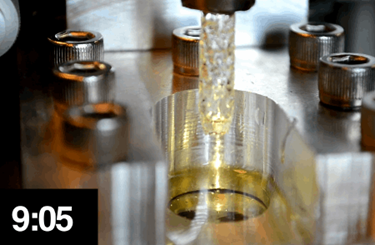3D-Printed Biodegradable Stents Bypass Traditional Stent Complications

Scientists from Northwestern University have developed a 3D-printed biodegradable stent that can be customized to fit the needs of individual patients. According to researchers, the citrus-based polymer material used has natural antioxidant properties, and could potentially be loaded with anti-coagulation drugs to minimize complications.
Traditionally, stent placement and sizing is dependent on the surgeon’s guesswork and experience. If a stent does not fit correctly, it could move in the vessel and ultimately fail, explained the researchers. Repairing the stent or placing a vascular graft exposes the patient to additional risk. Recent advances in stent technology have introduced devices that dissolve slowly over time to mitigate the long-term risk of a permanent implant. In July, Abbott announced FDA approval for the first fully-dissolving heart stent, Absorb.
The stent design and manufacturing method proposed by Northwestern engineers Guillermo Ameer and Cheng Sun would incorporate advantages of a dissolving stent with the customization offered by 3D printing. Ameer and Sun’s research — published in Advanced Materials Technologies — adapted a 3D printing technique, called projection micro-stereo-lithography, to print stents using light and photocurable liquid resin. Their technique, called micro continuous liquid interface production (microCLIP), is capable of reproducing microscopic features to exactly suit the structure of the patient’s blood vessel.
“There are cases where a physician tires to stent a patient’s blood vessel, and the fit is not good,” explained Ameer in a press release. “There might be geometric constraints in the patient’s vessel, such as a significant curvature that can disturb blood flow, causing traditional stents to fail. This is especially a problem for patients who have conditions that prevent the use of blood thinners, which are commonly given to patients that have stents. By printing a stent that is the exact geometric and biologic requirements of the patient’s blood vessel, we expect to minimize the probability of these complications.”
The citrus-based polymer, developed by Ameer’s lab in 2014, is flexible and biodegradable, with the added advantage of antioxidant properties. Previous research with the polymer demonstrated its ability to inhibit clot formation, and Ameer stated that the material could easily be loaded with drugs to improve the healing process. The 3D printing technique can manufacture a stent in less than four minutes, and produce up to 100 units at a time, faster than traditional manufacturing methods.
Earlier this year, University of Melbourne scientists announced they had received grants from the Australian Research Council to develop 3D-printable stents using a supercomputer. Researchers commented that they looking for a biocompatible polymer that would dissolve over time.
Additive manufacturing has been adopted by one-third of all manufacturers, according to PwC consultants Jim Varelis and Brian Williams. The FDA has approved more than 85 devices manufactured with 3D printing, including prosthetics, casts, and customized implants.
Following encouragement from the Advanced Medical Technology Association (AdvaMed) and J&J, FDA recently released a draft guidance clarifying the agency’s proposed approach to regulating 3D-printed medical devices. The document is based on a 2014 public workshop hosted by FDA, and the agency noted that these regulatory pathways will “continue to evolve” as the technology matures.
